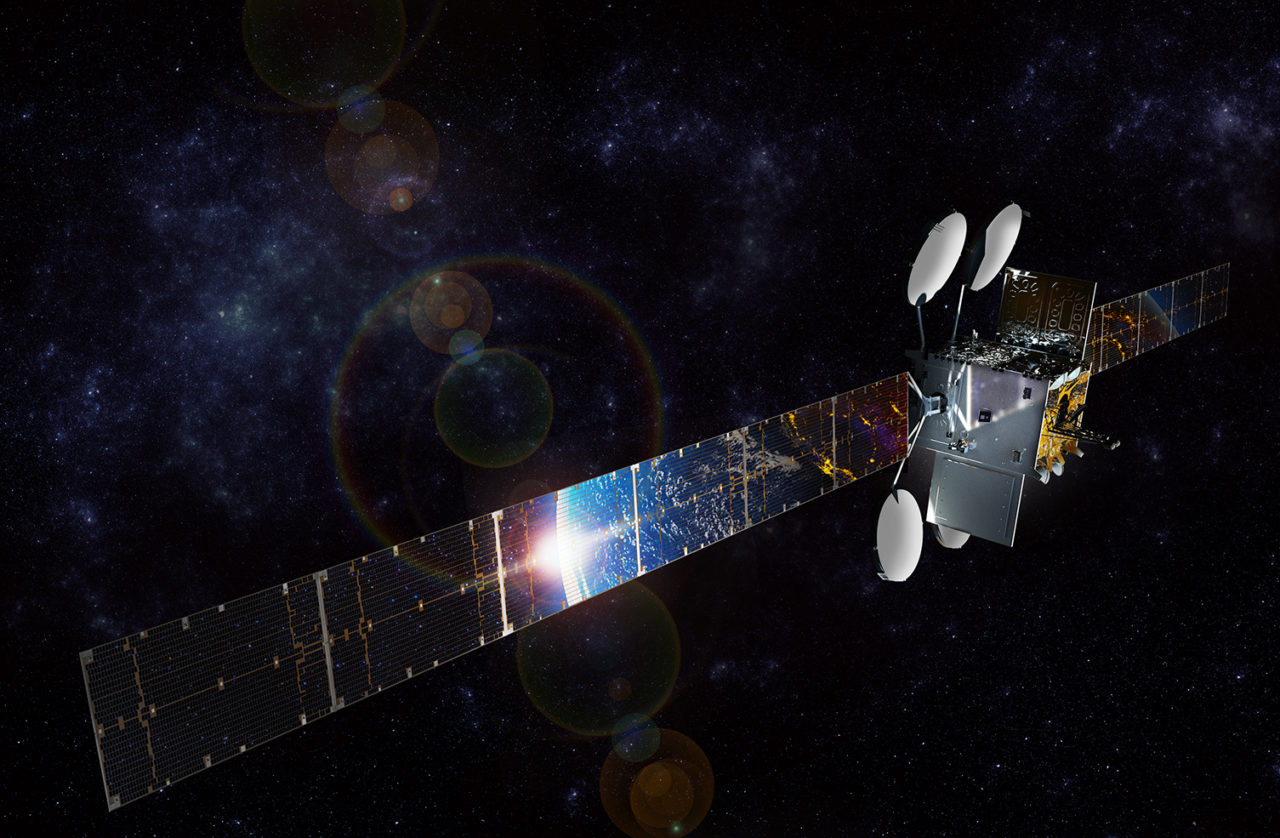ViaSat 2 Successfully Transmits First Data from Space

Rendition of the ViaSat 2 satellite. Photo: ViaSat.
ViaSat announced the ViaSat 2 satellite has successfully arrived in Geostationary Earth Orbit (GEO) at 69.9 west longitude, and has transitioned into orbit normal mode (Earth pointing) with its reflector and radiator deployments now complete. The company also confirmed the satellite has commenced in-orbit testing, including the key milestone of the first end-to-end system test, with the ViaSat 2 satellite transmitting and receiving data to and from the new ViaSat ground segment.
Arianespace launched ViaSat 2 from Kourou, French Guiana, on June 1. The satellite employed a hybrid propulsion approach, using both traditional chemical as well as electric propulsion. The chemical propulsion subsystem was responsible for initial orbit raising and performed according to plan, setting the stage for the follow-on ascent to GEO using electric propulsion, which was completed last week. Viasat spacecraft partner, Boeing Satellite Systems International, controlled and monitored ViaSat 2 throughout the orbit raising process, flying the satellite from its mission control center in El Segundo, California.
Following completion of the in-orbit tests, the ViaSat 2 satellite is scheduled to enter commercial service in February 2018, where it will enable the delivery of advanced residential, enterprise, government and In-Flight Connectivity (IFC) services.